| Just loved this sign.
This is an arboretum with many large redwood trees. Very few of the plants
are small enough to dig up and move without serious machinery. | 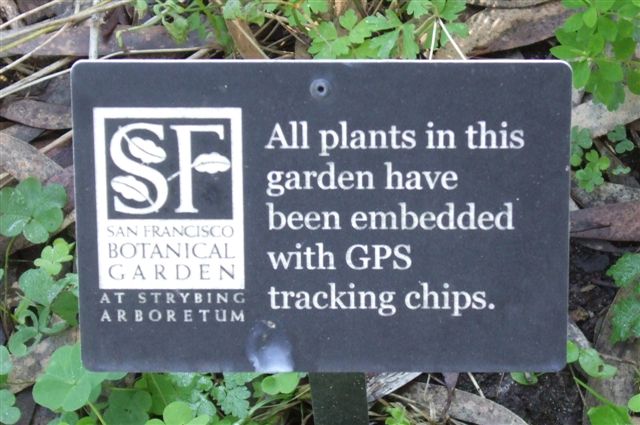 |
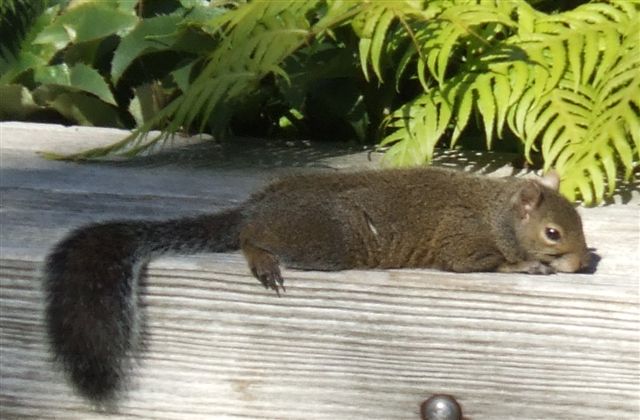 |
In the meantime the real villains were having a snooze. |
| One section of the
gardens is planted with plants from different geological time periods.
Mostly they are ferns and related plants. These are a couple of the seed
heads. | 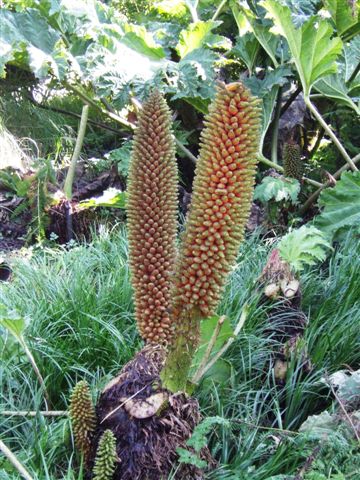 |
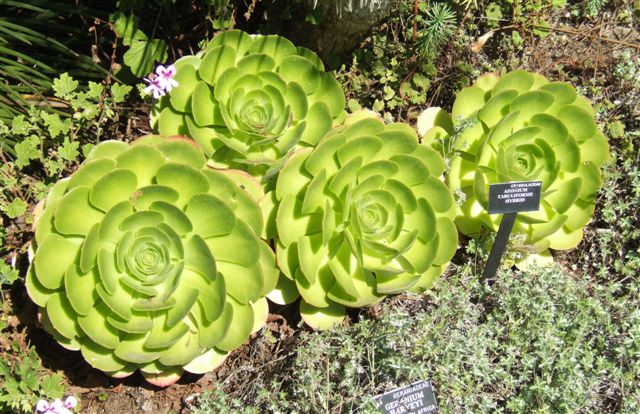 |
These are succulents called aeoniums from the crassulaceae family.. |
| If you look closely at
these daisies then you will see the masses of insects busy pollinating them.
But the surprising part is that the are tree flowers. | 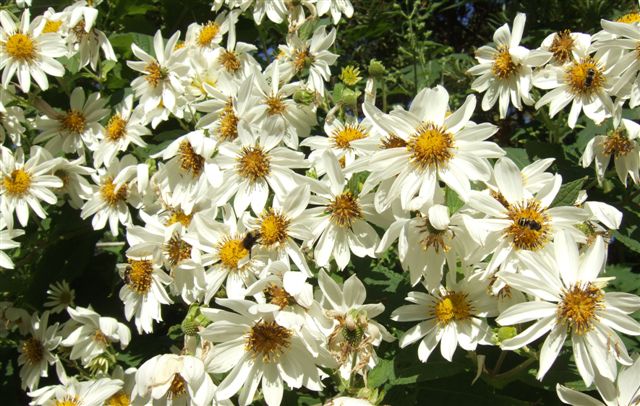 |
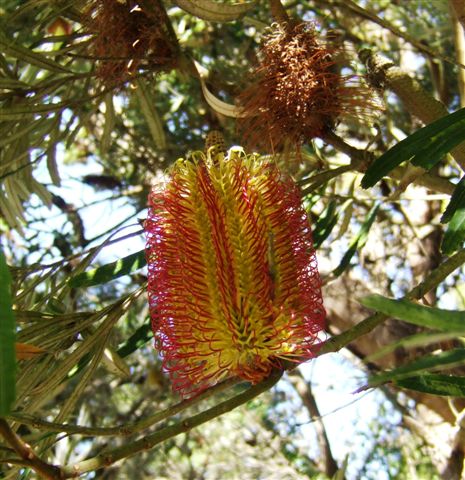 |
November is not normally a good time to visit gardens but there were some
spectacular seed heads. |
| This odd looking plant is
a grass tree from Australia. Different parts of the gardens contain plants
from different parts of the world. | 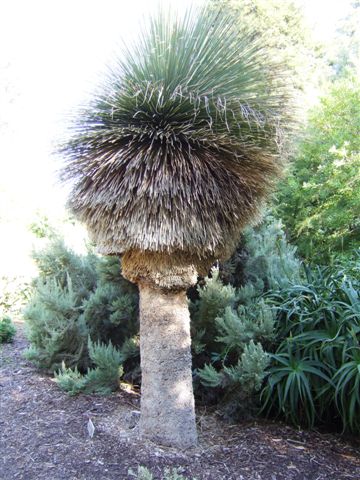 |
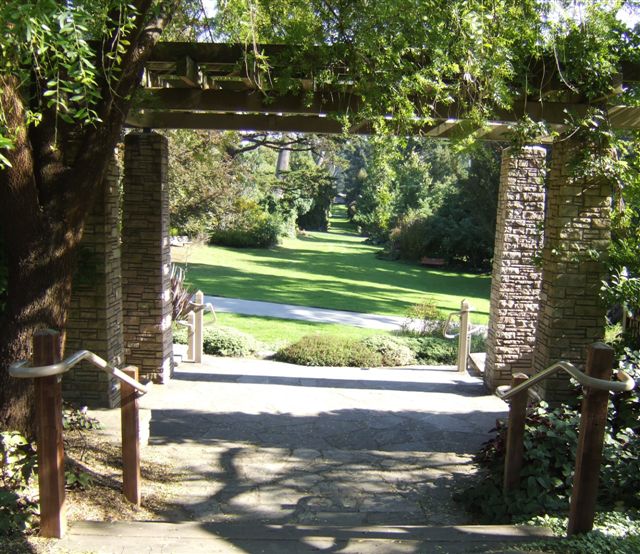 |
The view through this archway goes right across the gardens. |
| Very pretty and very
unusual but I can't remember what these are. There were several colour
variations. | 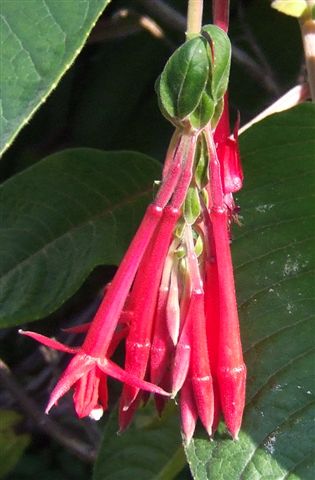 |
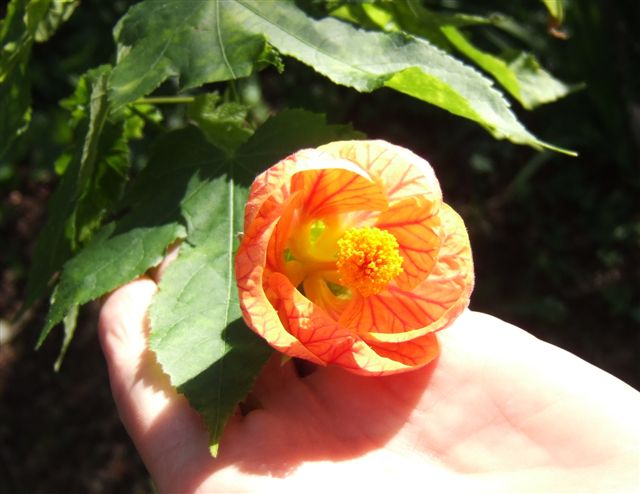 |
I just liked the colour of this flower. Flowers are rare at this time of
year. I think this is Australian in origin. |
| Not a flower but a
variation of leaf. Again most unusual.. | 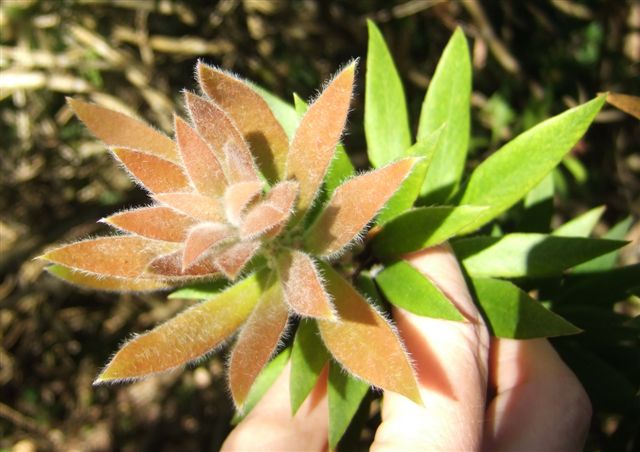 |
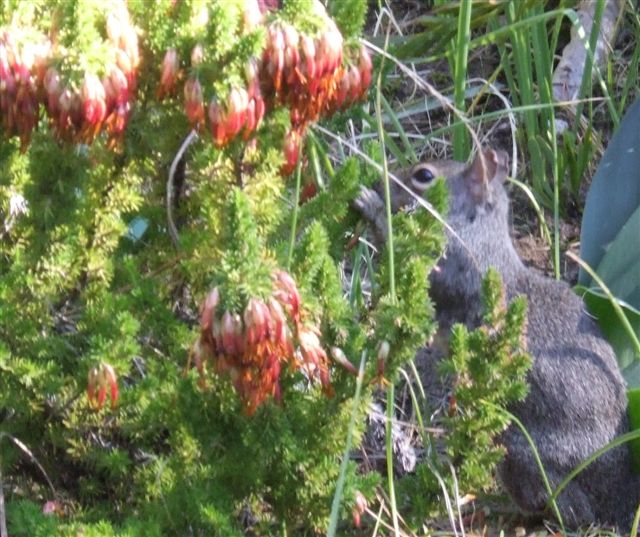 |
One of the villains munching his way through the flowers on this plant. |
| A reminder that we are
moving towards the more desert areas where the succulents are more prolific. | 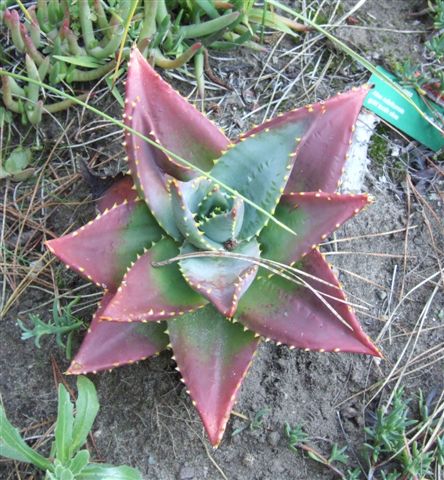 |
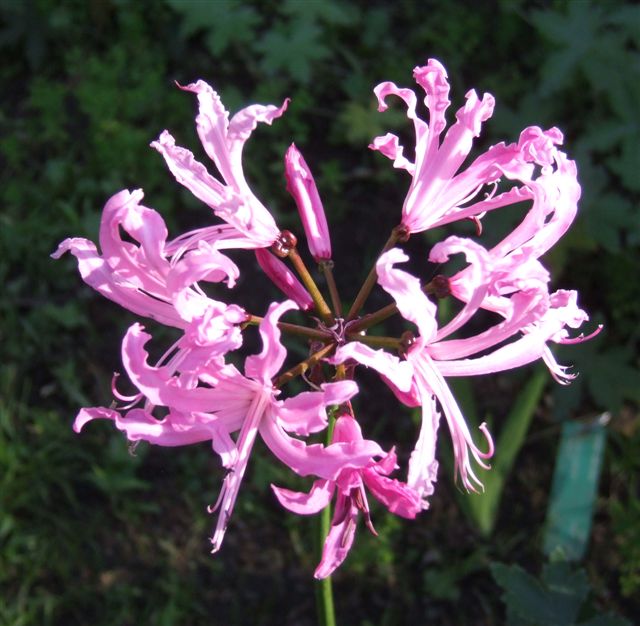 |
The sun was catching this flower head just right. |
| We did find a few flowers
still in bloom with a wide variety of colours. | 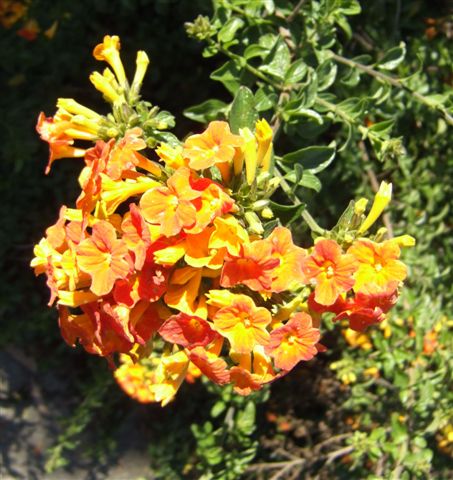 |
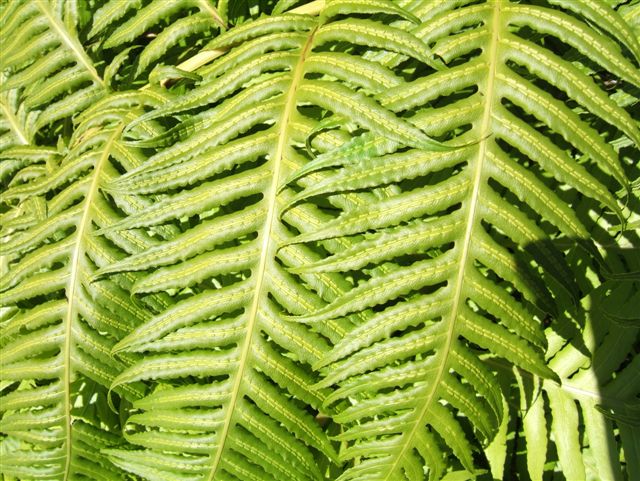 |
But there are always the leaf shapes to provide interest when the flowers
have gone. This is the rooting chainfern (woodwardia radicans) which is
found in Europe and Asia. |
| This is Chilean rhubarb,
and they do eat it as we eat the European version. In summer the plants
produce either male or female flower spikes, and the tiny red 'beads' are
the ripened fruit. | 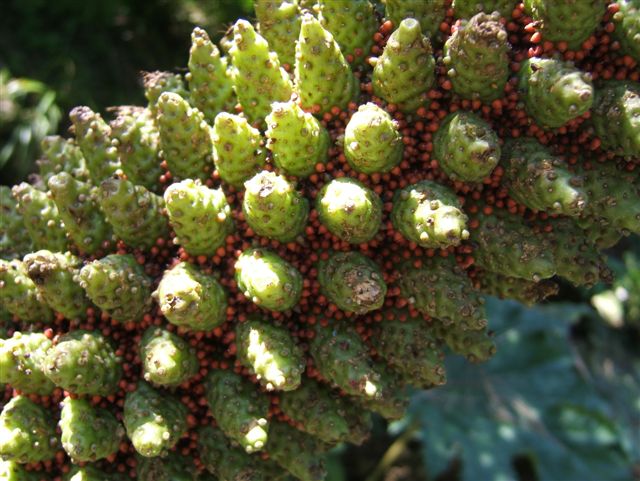 |
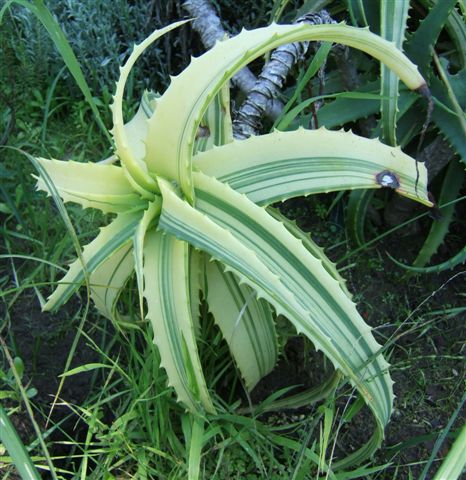 |
A variegated aloe. Quite striking! |
| Many of the plants have
name plates and it is one of the best signed gardens we have visited. Even
if we had never heard of half the plants. | 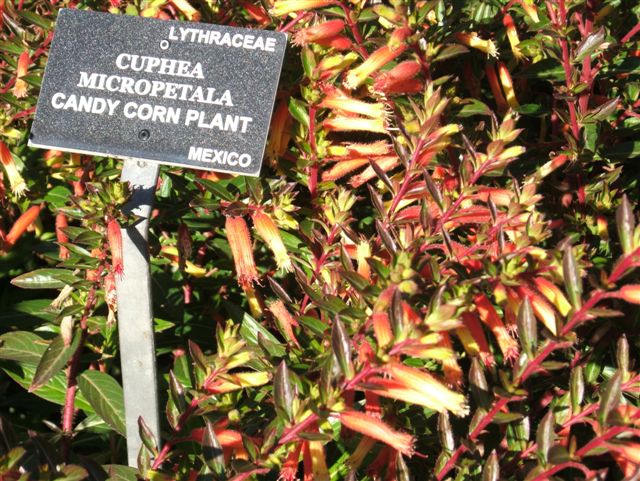 |
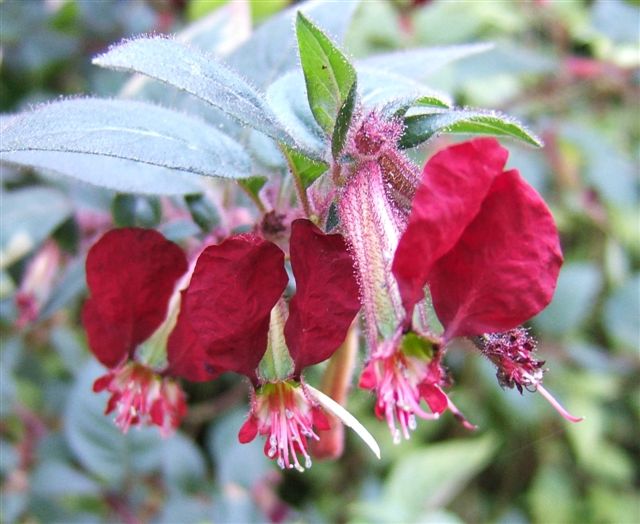 |
I think this is a fuschia of some sort. I like fuschias. |
| We are always struck by
blue flowers. They always seem to be so vivid. It's a shame that most seem
to prefer acid soil which we don't have. | 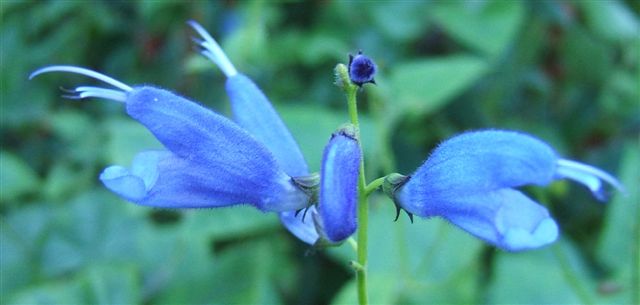 |
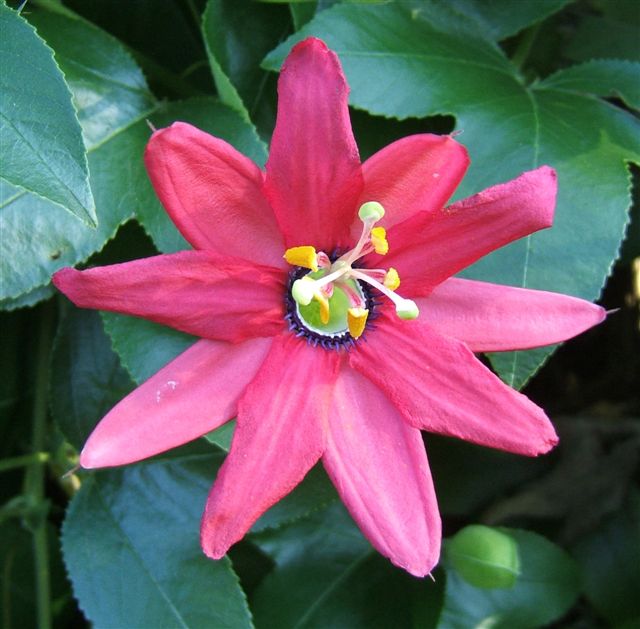 |
Insect lunch is attractively laid out in this passion flower. |
| Another unusual flower
form and colour, again from Australia, is the chef's cap correa. I wonder
what shape its pollinator is? | 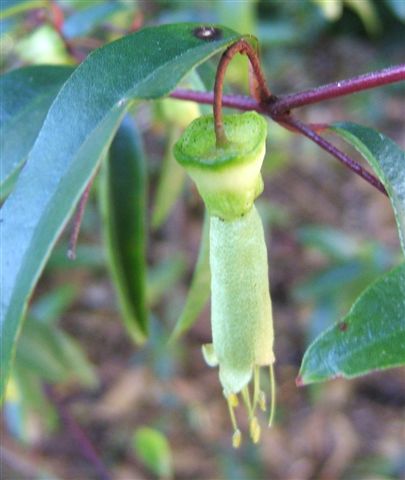 |
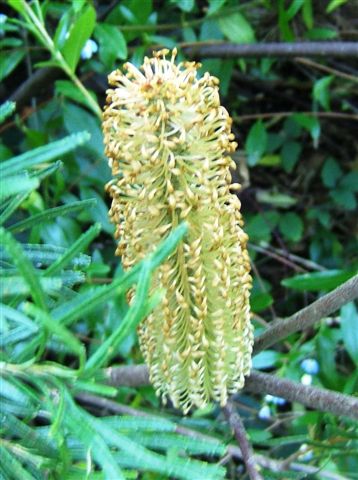 |
But it's the end of the season - time for the seeds. This one reminds me of
a loofah. |
|